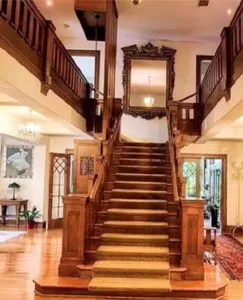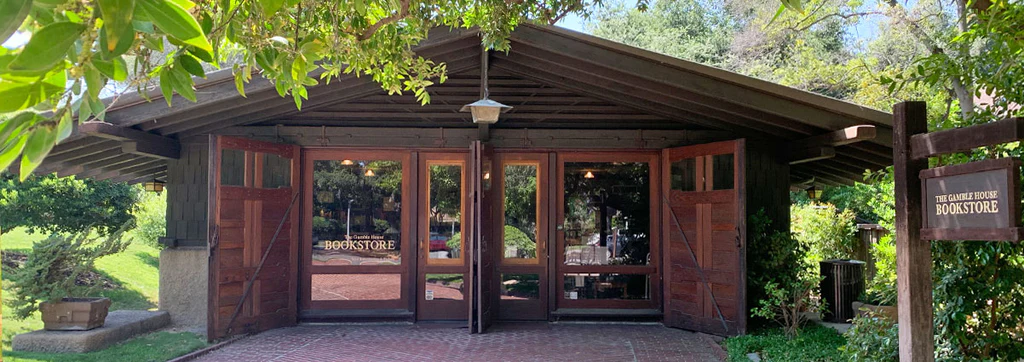Architectural Records Reveal in Special February Event PLUS A Bookstore in Need
by Kate Nixon
Asheville Art Museum Behind the Scenes:
Asheville Boomtown Architects
Saturday, February 18th, 3:30 – 5:00pm
Click here to register for the Asheville Art Museum Behind the Scenes Event
Transportation provided
Please note: the time above is correct, not the time listed in the older paper brochure.


The drawings and sketches of Asheville “Boomtown” architects Douglas D. Ellington and Richard Sharp Smith will be on display in a special behind the scenes event happening in correlation with the National Arts and Crafts Conference and Shows at the Grove Park Inn.
On Saturday, February 18th from 3:30pm – 5:00pm, attendees can explore the Asheville Art Museum’s architectural drawing collection, which has more than 4,900 drawings and approximately 2,000 other records and ephemera. Vital components of the collection include drawings, sketches, watercolors, and more by the architects Douglas D. Ellington and Richard Sharp Smith.
Transportation from and back to the Grove Park Inn will be provided.

Image: Ellington, c1935, Courtesy Library of Congress
Douglas D. Ellington
Born in Clayton, Norrh Carolina, his creative abilities turned into a study of architecture at the Ecole des Beaux Arts in Paris and the Drexel Institute in Philadelphia, which turned into a degree of Bachelor of Science in Architecture in 1912. After a long career in Pittsburgh, 43-year-old Ellington came back to North Carolina and settled in Asheville in the 1920s – a busy and booming time for the Buncombe County seat. Ellington ability to work with a number of different styles shows with his four major accomplishments in his time in Asheville, including the First Baptist Church, the Asheville City Building, and Asheville High School and the S&W Cafeteria. While his style is known for more Art Deco, the impact of Ellington’s visions helped make Asheville a prominent spot for studying architecture.
Richard Sharp Smith
English-born Smith arrived in America in 1882 to New York, where he worked for architect Richard Morris Hunt: known to Asheville as Biltmore House’s architect. In 1886, Smith was assigned the role of supervising architect overseeing construction on site. Three years later, he became Vanderbilt’s lead architect following the death of his colleague Richard Hunt. While the Biltmore house certainly became Smith’s most well-known project, his projects in Asheville through his own firm ranged from the Biltmore Village Post Office to houses in Chestnut Hill and Montford Avenue to the E.W. Grove office on Charlotte Street and the All Souls Church in Biltmore Village. Smith settled down in Asheville to raise a family and remained in Asheville working on houses until his passing in 1924.

The Asheville Art Museum Architectural Records
The Museum is working on a grant-funded project to create a fully organized and documented architectural records collection that will be easily accessible for a variety of purposes, including exhibitions, programs, and research.
Join Museum staff for a Behind the Scenes presentation of works from the architectural drawings Collection and learn more about the ongoing project to keep these important historical documents safe, preserved, and accessible to the public.
Space is limited. Registration is required. Attendees receive a 10 percent discount at the Perspective Cafe, excluding alcohol. Shuttle transportation is provided to and from the Grove Park Inn. Those interested can inquire at the Sammons wing table or register online at ashevilleart.org.
Click here to register for the Asheville Art Museum Behind the Scenes Event
The Gamble House Bookstore Flooded, How You Can Help

In an email sent out to supporters this past Friday, the Gamble House Bookstore explained “…a significant amount of water came in through a door during the big storm that started on January 9, and we’ve got a long list of things to repair before we are back open for business. Some inventory was lost, and the carpet needs to be repaired and replaced. But we’ll be back soon, better than ever!”
The bookstore also noted that the website and social media would be updated and list re-opening information.
If you’d like to help the Gamble House bookstore in their time of need, here’s how you can help: 



